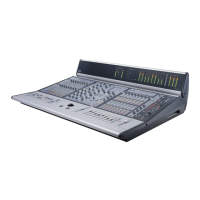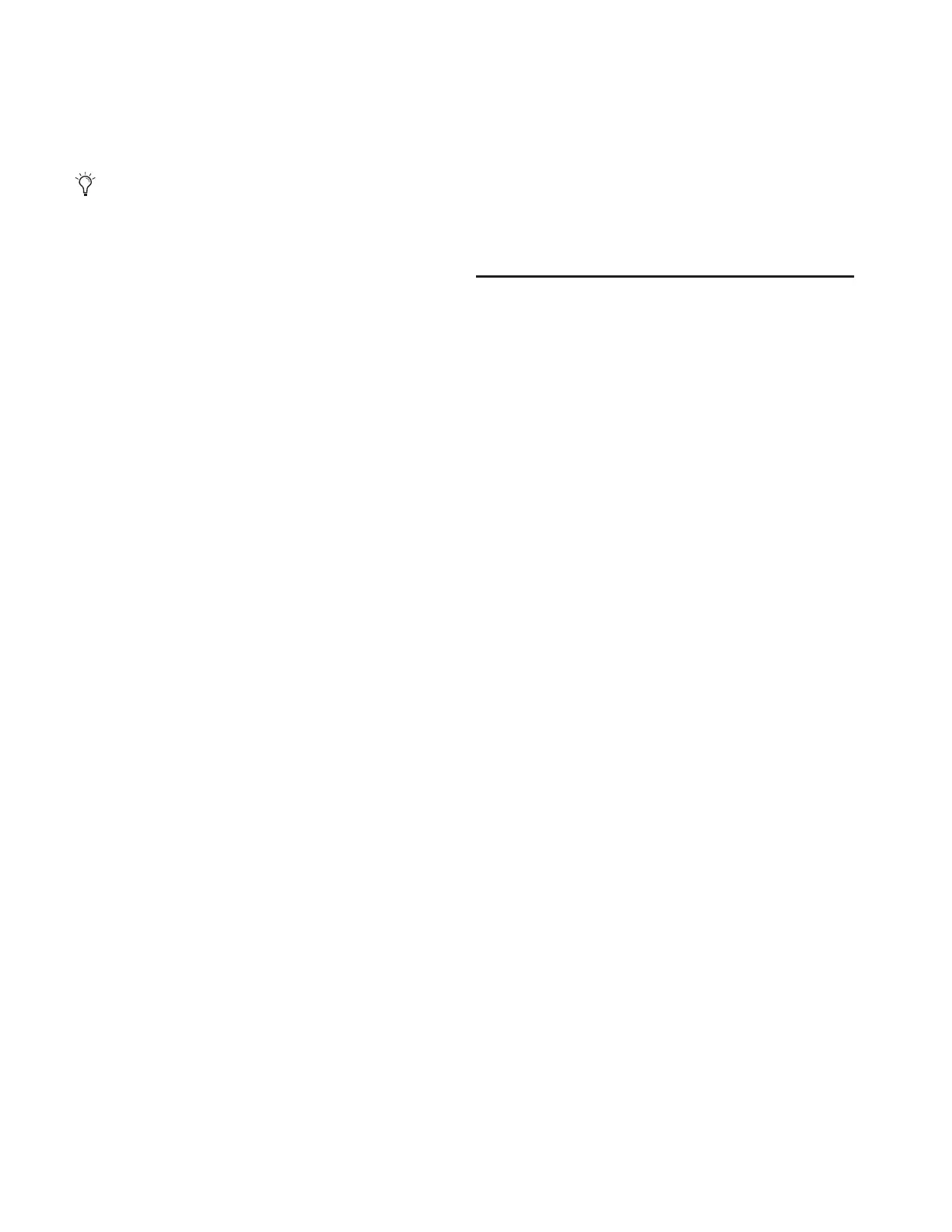D-Show Guide126
Analog Mode An EQ with a response modeled on that of an
analog console renowned for its EQ section. Frequency range
is limited to match, and the outer bands provide shelving
only. Analog Q is expressed in octaves of bandwidth in the
range 0.1 (left, a tenth of an octave) to 2 (right, two octaves.)
Gain, Frequency, and Q/Bandwidth
Each band of built-in parametric EQ provides the following
parameters, as available on Input Channels or FX Returns:
Gain Boosts or cuts the corresponding band. The LEDs around
the Gain encoder light from the center-point to the right
(boost), or from the center-point to the left (cut) to illustrate
current Gain.
Freq Sets the center or corner frequency for each band, as fol-
lows:
• Freq sets the center frequency for the Hi-Mid and Lo-Mid
bands, and for the Hi and Lo filters when in Bell mode.
• Freq sets the corner frequency for the Hi and Lo filters
when in Shelf mode. (See “Bell and Shelf Modes for Hi
and Lo Filters” on page 126.)
Turning the encoder clockwise increases the frequency for
that band; turning it counter-clockwise decreases the fre-
quency. A single LED around the encoder illustrates the cur-
rent encoder setting. The available range of each band de-
pends on the EQ mode (Digital or Analog). See “Control
Ranges for Built-In Parametric EQ (All Modes)” on page 132.
Q (Q/Bandwidth) Controls Q (in digital mode) or bandwidth
(analog mode).
◆ In Digital mode, Q determines Q factor. When the Hi or Lo
filters are in Shelf mode, the Q knob determines the Q of the
shelf.
◆ In Analog mode, this control changes to a bandwidth con-
trol which performs essentially the same function.
Band In/Out Each of the available EQ bands can be taken in or
out (bypassed) using the band In/Out control. On the control
surface, the Gain knob for each band serves as the in/out con-
trol by pushing the encoder. The indicator LED lights to indi-
cate band In. On-screen, a dedicated In/Out switch is located
just below each Gain knob.
Bell and Shelf Modes for Hi and Lo Filters
In digital EQ mode, the Hi and Lo filters on Input Channels
and FX Returns can be toggled between Bell and Shelf modes.
When in Bell mode, the Hi or Lo filters function as a paramet-
ric EQ with variable Q. When in Shelf mode, the Hi module is
a high-shelf EQ, and the Lo module is a low-shelf EQ. For in-
structions on configuring these bands for Bell or Shelf mode,
see “Adjusting EQ” on page 127.
Channel Modes Affecting EQ
The following features affect operation of built-in EQ.
Dyn Pre EQ
By default, built-in Dynamics processing occurs before
built-in EQ processing in the signal chain of Input Channels.
This can be changed on a per-channel basis by toggling the
channel’s Dyn Pre EQ setting.
To toggle the Dyn Pre EQ setting of an Input Channel:
1 Target the Input Channel whose Dyn Pre EQ mode you
want to change by pressing its Select switch.
2 In the Channel Config section, press the Dyn Pre EQ switch.
When enabled, the Dyn Pre EQ switch LED lights.
Input Direct Mode
Input Direct mode lets you bypass the built-in dynamics and
EQ processing, and all inserts on Input Channels and FX Re-
turns. For more information, see “Using Input Direct” on
page 56.
The HPF does not change when the EQ is switched between
Digital and Analog mode.

